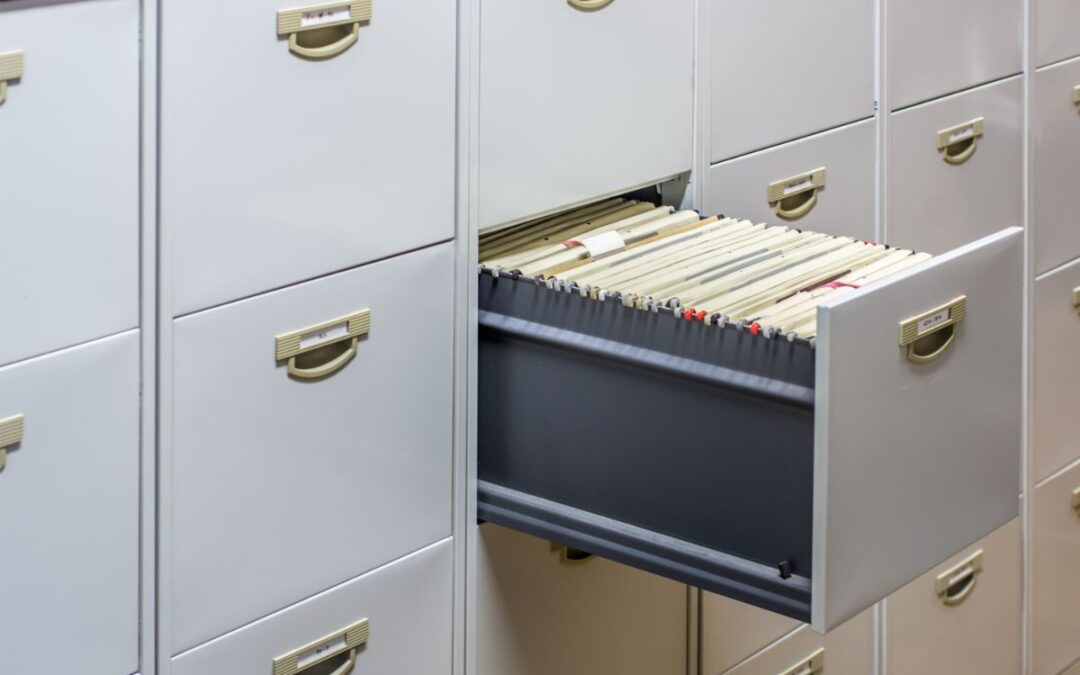Desks and file cabinets are essential elements in any office environment. These furniture pieces support daily operations and contribute to a workspace’s aesthetic, comfort, and workflow.
Whether outfitting a corporate office, a co-working space, or a home office, investing in the right office desks and file cabinets is crucial for fostering productivity, collaboration, and a clutter-free environment.
Why Desks and File Cabinets Matter
The workspace reflects a company’s values, culture, and attention to detail. Desks and file cabinets, though often seen as necessities, are the foundation of effective office setups. Desks provide a dedicated space for employees to work, collaborate, and focus. File cabinets are important for organizing and securing documents. They help maintain compliance with regulations and support daily business operations.
Key Benefits:
- Improved Productivity: An organized workspace helps reduce distractions and enhances efficiency.
- Professional Appearance: High-quality office furniture projects a sense of professionalism to clients and employees alike.
- Ergonomics and Comfort: Intelligently designed desks promote better posture and reduce the risk of musculoskeletal problems.
- Data Security and Organization: File cabinets help keep sensitive documents safe and systematically arranged.
Office Desks: Styles, Functions, and Trends
1. Types of Office Desks
Office desks come in assorted styles to accommodate job functions, spatial requirements, and aesthetic preferences. Some popular types include:
- Executive Desks: These are typically large, stately desks that serve as the centerpiece in a private office. They often come with built-in drawers, hutches, and sometimes return units for extended surface area.
- Computer Desks: Designed specifically for computer use, these desks feature space for monitors, keyboard trays, and wire management grommets.
- L-Shaped Desks: Ideal for multitasking and corner office setups, L-shaped desks offer dual work zones—perfect for professionals who juggle various responsibilities.
- Standing Desks: Adjustable height desks promote movement and can help reduce sedentary behavior, making them increasingly popular in modern offices.
- Modular Desks: These desks are part of systems that can be reconfigured or expanded, and they are great for growing businesses and collaborative spaces.
- Compact or Writing Desks: Perfect for smaller spaces or minimalist workstations, these are sleek and straightforward with minimal storage.
2. Material Considerations
The choice of material impacts not only the desk’s appearance but also its durability and maintenance requirements:
- Laminate: Affordable and available in various finishes, laminate desks are resistant to stains and scratches—ideal for high-traffic areas.
- Wood Veneer: Offers the classic look of wood at a lower price point, though it may be more prone to wear.
- Solid Wood: Sturdy and stylish, these desks are built to last and are typically used in executive settings.
- Metal and Glass: Often seen in modern, minimalist designs, these materials offer a contemporary aesthetic and are easy to clean.
3. Functional Features
Look for desks with the following features for improved utility:
- Built-in drawers or pedestals for storage
- Cable management solutions
- Lockable compartments
- Ergonomic height or adjustable height options
- Integration with office equipment like printers or monitors
File Cabinets: Types, Features, and Security
1. Types of File Cabinets
Filing systems are essential for maintaining order in an office. Choosing the right type of file cabinet depends on the nature and volume of your paperwork:
- Vertical File Cabinets: These tall, narrow units are great for storing standard letter-size documents in a compact footprint.
- Lateral File Cabinets: Wider and shorter than vertical cabinets, these offer more accessibility and can double as credenzas or under-desk storage.
- Mobile File Cabinets: Equipped with wheels, these can be moved easily and typically fit under desks.
- Fireproof File Cabinets: These are for businesses that handle sensitive or critical documents and offer protection against fire and water damage.
- Flat File Cabinets: Used for storing large documents like blueprints, artwork, or architectural plans.
2. Materials and Durability
File cabinets must withstand daily use and, in some cases, protect sensitive information. Common materials include:
- Steel is the most durable and secure option for heavy-duty usage and legal compliance.
- Wood or Laminate: Offers a more elegant look and is suitable for executive offices or customer-facing spaces.
- Plastic: Typically reserved for home or casual office use, these are lightweight but less durable.
3. Security and Accessibility
Security can be a major concern depending on the nature of the files being stored. Look for cabinets with:
- Locking mechanisms (key or digital)
- Fire and water resistance
- Anti-tip mechanisms
- Full-extension drawers for easier access
Choosing the Right Desk and Filing System
Step 1: Assess Your Needs
Evaluate your workflow, team size, and the kind of work being performed. For instance:
- Do employees need dual monitors or extra space for paperwork?
- How much physical documentation do you handle?
- Is there a need for shared workspaces or private offices?
Step 2: Consider Space and Layout
Take accurate measurements of your office space and consider the layout. Ensure there’s enough room for people to move comfortably. Modular desks and mobile file cabinets offer more flexibility in smaller or reconfigurable spaces.
Step 3: Budget Accordingly
Desks and file cabinets are long-term investments. Balance cost with quality—opting for high-traffic areas to have more durable, ergonomic pieces, and using budget-friendly options where feasible.
Step 4: Match Aesthetic with Brand Identity
Furniture design affects employee morale and the image you project to visitors. Choose styles and finishes that align with your company’s branding.
Trends in Office Desks and File Storage
1. Sit-Stand and Ergonomic Desks
More businesses recognize the health benefits of standing desks and incorporate ergonomic features like keyboard trays, monitor arms, and footrests.
2. Integrated Technology
Modern desks now have built-in charging ports, USB hubs, and smart sensors that can track usage or automatically adjust desk height.
3. Hybrid Work-Friendly Furniture
Desks and file cabinets that are lightweight, mobile, or modular support the flexible work styles seen in hybrid and remote work environments.
4. Sustainable Materials
Eco-conscious furniture options made from recycled or sustainably sourced materials are rising, appealing to businesses aiming to reduce their environmental impact.
5. Minimalist and Open-Concept Designs
With the rise of collaborative and open-office plans, minimalist desk designs with clean lines and open storage solutions are becoming more popular.
Best Practices for Office Furniture Maintenance
To ensure longevity and functionality:
- Clean regularly: Use appropriate cleaning products based on the material.
- Avoid clutter: Use drawer dividers, label files, and remove unused paperwork.
- Inspect mechanisms: Check locks, drawer slides, and adjustable parts for wear.
- Upgrade as needed: Don’t wait for damage or discomfort to replace outdated furniture.
Why Choose American Business Equipment (ABE)?
At ABE, we understand that your office furniture is more than just a desk or cabinet—it reflects your company’s culture, values, and work ethic. That’s why we provide top-quality, stylish, and functional office desks and file cabinets built to last and tailored to your business needs.
With ABE, you get:
- A wide selection of office furniture solutions
- Expert guidance and personalized recommendations
- Competitive pricing
- Professional delivery and installation
- Local service and support across New England
ABE has everything your business needs. From executive desks to secure filing systems, we help you create a workspace. This workspace will inspire productivity and professionalism.

